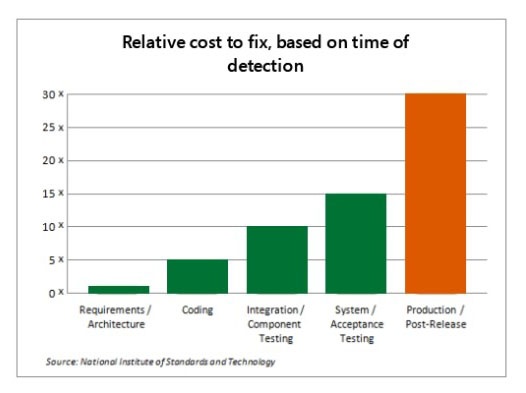 Nov 2, 2019
Nov 2, 2019

Shift Left For Quality And Speed In Salesforce Development
Last week I discussed the necessity for speed in Salesforce development. But speed is great only if it is matched with the same level of quality.Agile and DevOps have been widely adopted to quench our relentless pursuit for speed, with successful results. But we are struggling to find the right approach for quality validation and testing.
Our desire for quality needs to match our quest for speed. Otherwise speed is hindered by rework and bugs.
Shift left and shift right testing is to quality as agile and DevOps is to speed.
Shift Left Testing Approach
The shift left testing approach moves the testing process to the start of the development lifecycle. Previous testing strategies would complete development and then push the code to QA to be tested. Any all and bugs would be relayed back to developers. This process would repeat until all the bugs were fixed. This process is old and repetitive and it doesn’t entice speed.
With shift left, testing is in parallel with development. Identifying bugs as early as possible makes fixing them faster and easier. The code is in a less complex state thus reducing time and money to repair. Continue to identify and repair flaws through each development phase.
Continuous testing enables flexibility as well. Developers are encouraged to try new and innovative ideas throughout development knowing they will be given imminent feedback. This is the opposite of trying an idea and hoping it is successful in the end only to show up as a colossal flaw.
Research conducted by the National Institute of Standards and Technology found that the cost associated with code fixes based on time of detection is twice as much at Production/Post-Release compared to System/Acceptance Testing. It is three times higher at Production compared to Integration Testing. And six times higher at Production compared to the Development phase.

Shift left is about bringing quality along with speed to your Salesforce development. Frequent testing keeps your team on course and improves decision making throughout the project.
Shift Right Testing
Shift left provides continuous testing throughout development to ensure a quality product is being deployed to users. Shift right continues the testing past deployment to analyze performance and user traits. Testers request feedback and reviews from targeted users to gather experience satisfaction and performance in the real world, ensuring quality throughout the life of the product.
Shift right maintains and improves the quality of your Salesforce development. Post deployment testing provides wider test coverage. They can test the complete system for a longer period of time. Extensive use by users brings forth new practices and efficiencies, which help to enrich the overall quality.
In trying to match quality with speed, continuous testing should be implemented from the beginning of your development process. Agile and DevOps support faster releases while shift left testing reduces project cost. I recommend implementing both shift left and shift right approaches to increase the quality of your Salesforce development. If you can only choose one, start with shift left to provide a quality product at deployment.
Topics: Developer , Salesforce Development , Software Development ,
